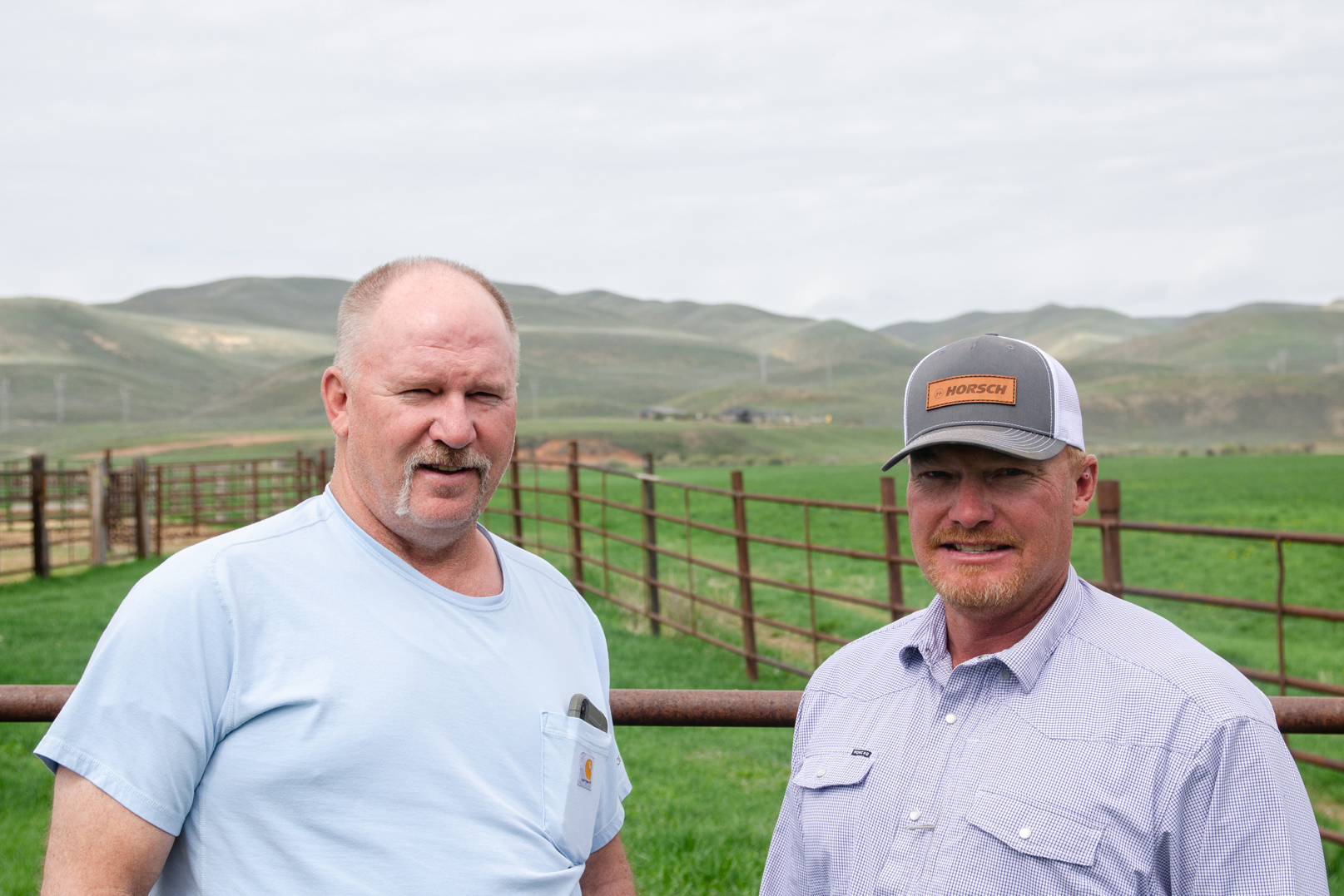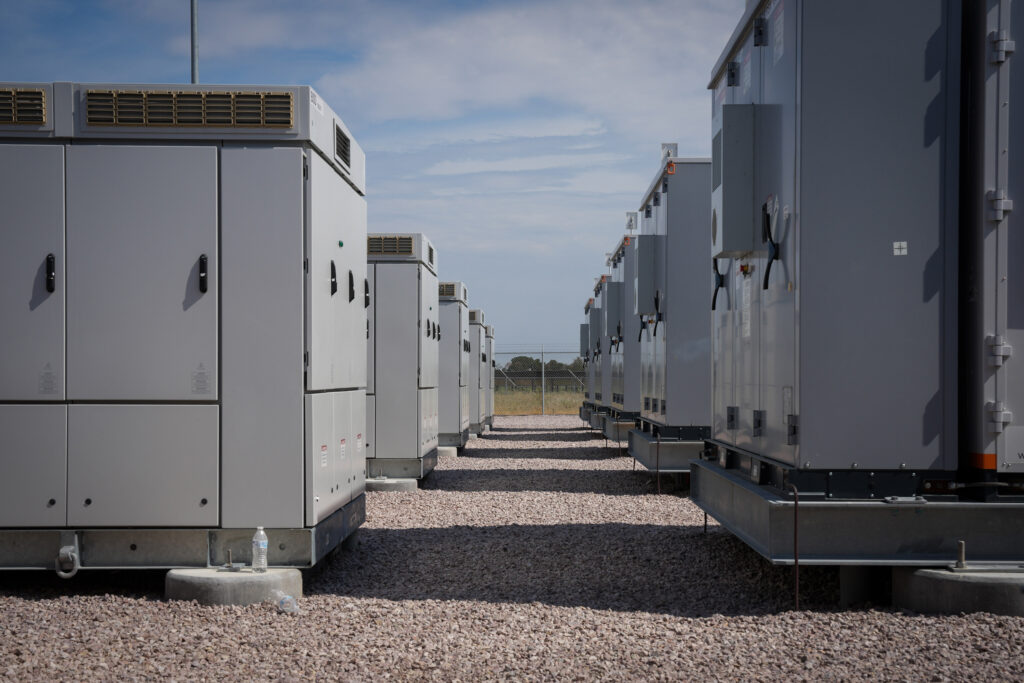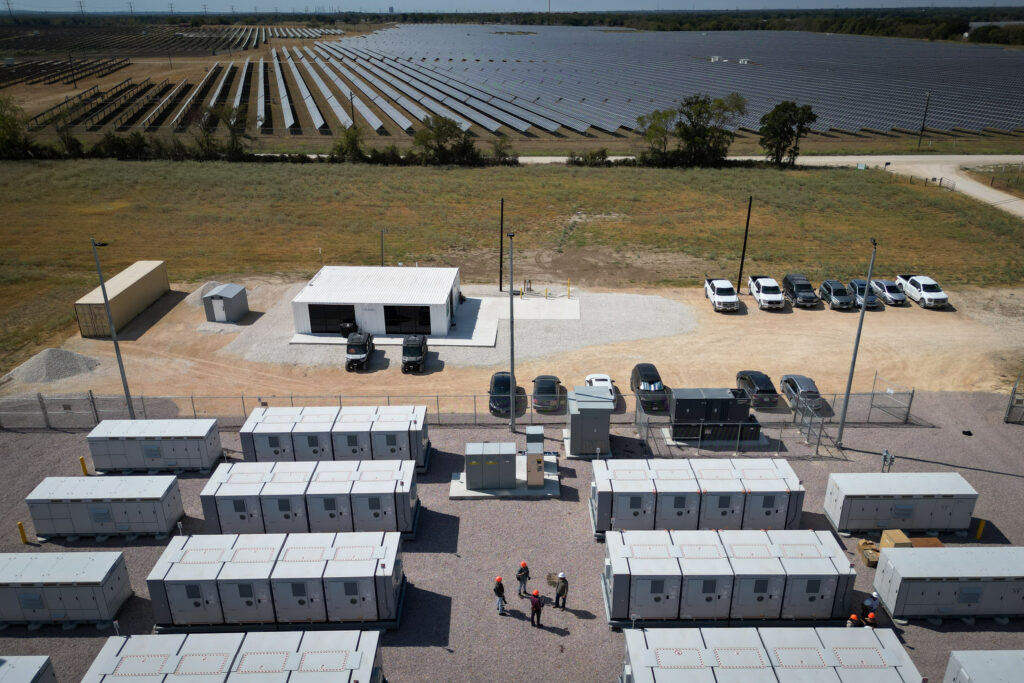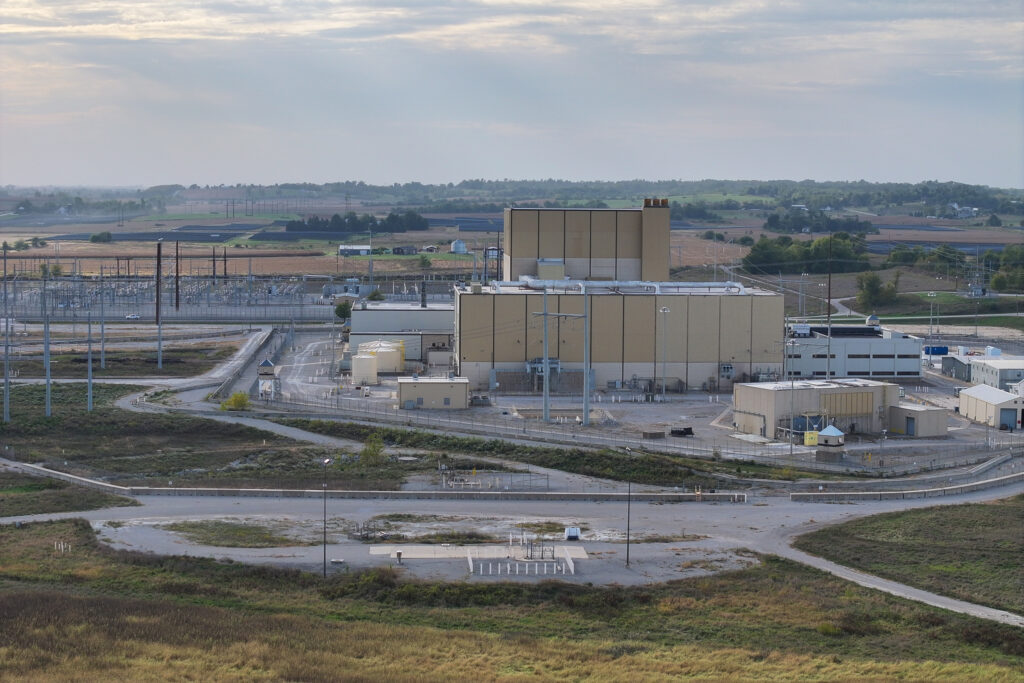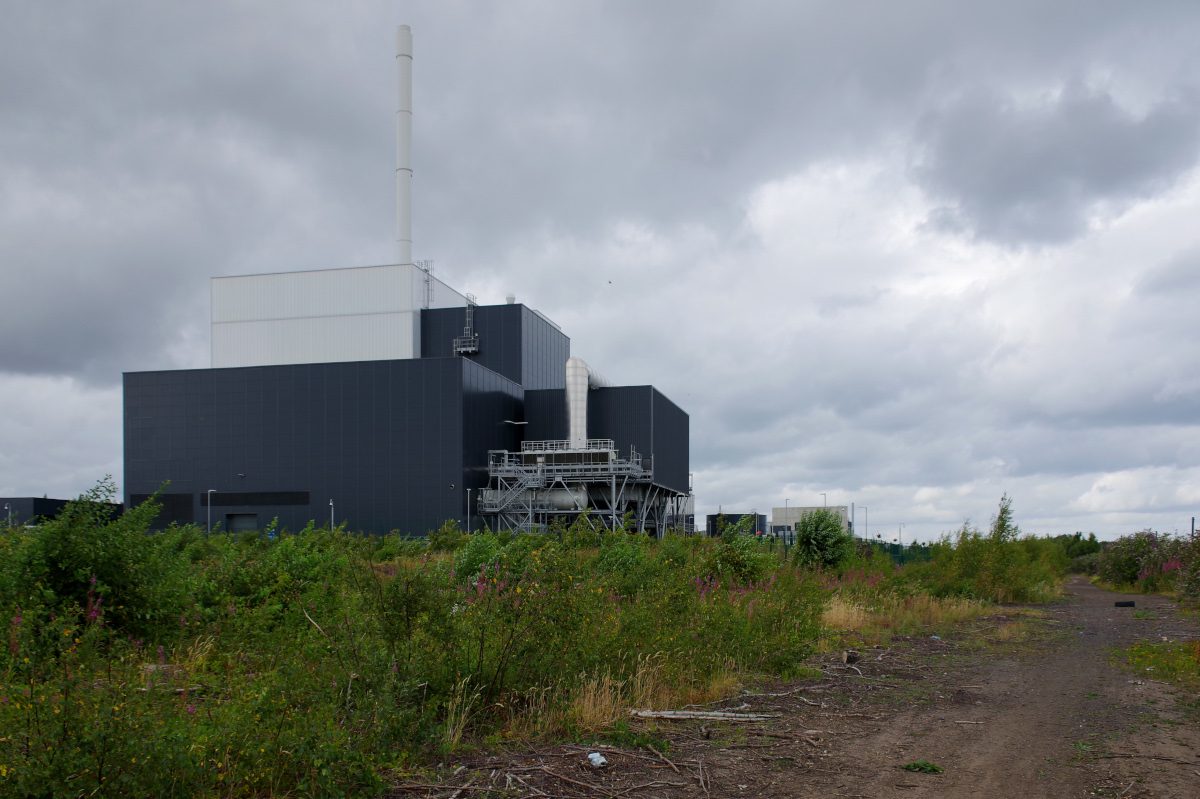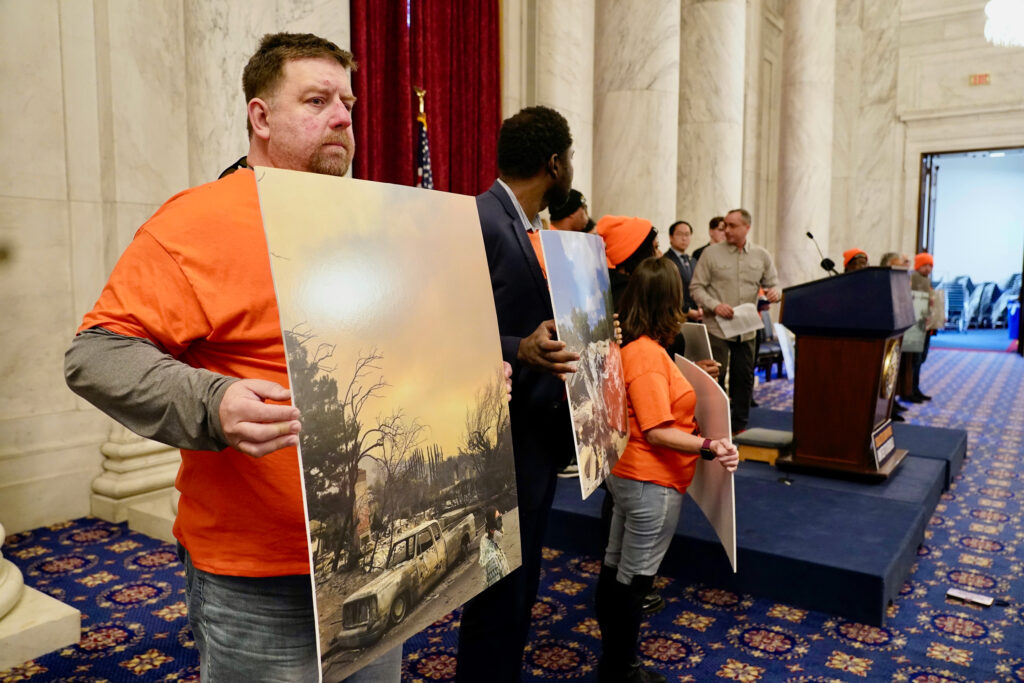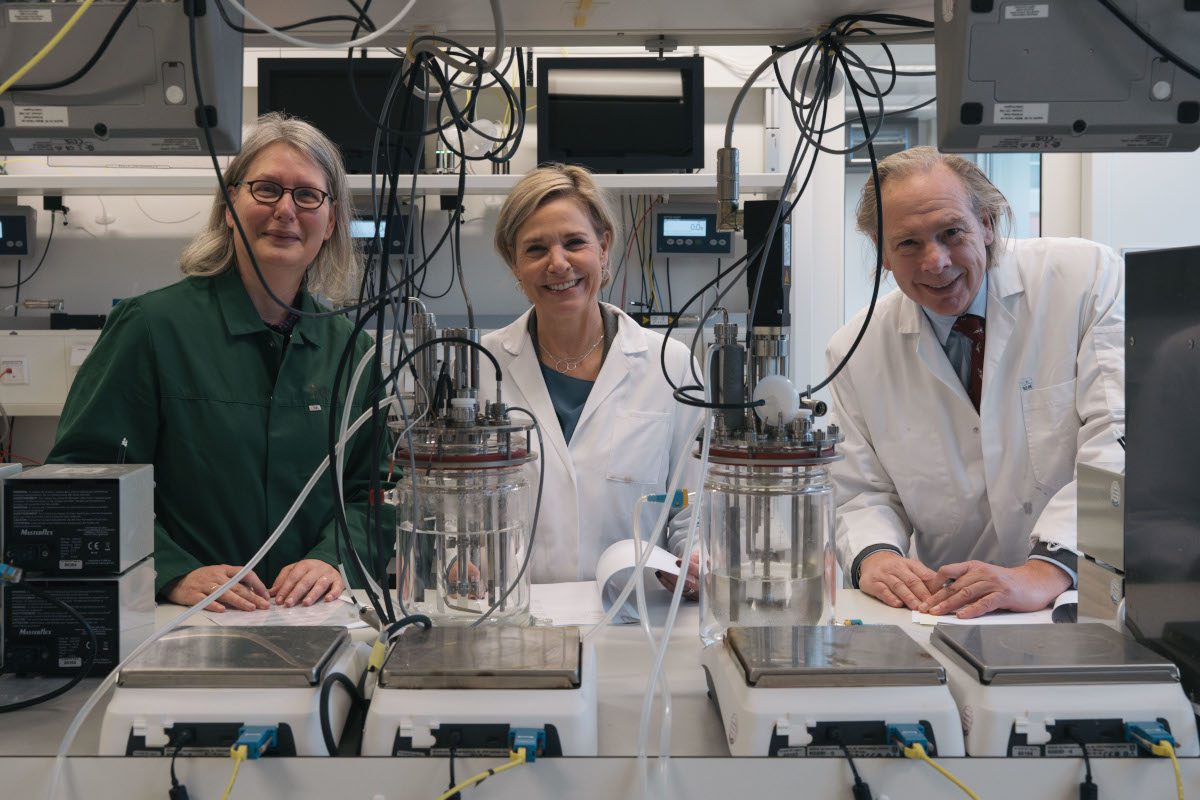LONDON, Ohio—Mark Forrest had a choice: Save his political career or continue to support a solar power project that he saw as an economic bonanza for his Ohio county.
He chose the latter.
“I’m a stubborn bastard,” he said, on a recent drive near his farm.
He was the only person on the three-member Madison County Board of Commissioners to support the Oak Run Solar Project. The 800-megawatt solar array would be the largest in Ohio and one of the largest in the country, built on farmland owned by a company connected to Microsoft co-founder Bill Gates.
Now, Forrest is about to be a former commissioner. After 16 years in office, he lost in the March 19 Republican primary to a political newcomer whose campaign was largely about opposition to solar power.
We’re hiring!
Please take a look at the new openings in our newsroom.
See jobs
Two days after the primary, state regulators approved construction of Oak Run, although the timing was just a coincidence. The Ohio Power Siting Board said one of the decisive factors was that local government leaders were divided on the project, which reduced the weight the panel gave to local opposition. Forrest’s willingness to dissent, even if it led to public scorn and electoral defeat, made a difference.
To an outside observer, it may make little sense that a state board responsible for deciding if a project is in the public interest would put so much weight on the views of individual local elected officials. But this is Ohio, where renewable energy developers have watched the legislative and regulatory process get tied in knots by local opposition to wind and solar.
Until the approval of Oak Run in March, the Power Siting Board had spent about two years rejecting just about every project that had substantial local government opposition. Oak Run was different, and the lawyers and advocates who closely observe these cases are trying to figure out why. Part of the answer is Forrest’s refusal to bend, but that’s not all of it.
Oak Run is huge by almost any measure. The project would cover 6,050 acres, about nine square miles. In addition to solar panels, it would have a battery storage system with capacity of 300 megawatts.
The developer, Savion, is based in Kansas City and owned by the oil giant Shell. The fact that Savion is owned by an oil company complicates the simple narrative that a clean energy economy must compete with a dirty energy economy. In many cases, the companies developing renewable energy projects are part of companies that get some or even most of their income from fossil fuels.
Savion, which declined to comment, convinced the board that the benefits of the project outweighed any local concerns. The advantages include a plan to work with Ohio State University to make the project a research site for “agrivoltaics,” the process of using the same land for solar and agriculture. And Savion was savvy in making its case, which included letters of support from several prominent Republicans in the legislature.
Developers and renewable energy advocates are optimistic that Oak Run is the beginning of a new trend of projects getting approved, but they also have gotten used to Power Siting Board decisions that seem to reinvent the rules on a case-by-case basis. Jenifer French, the board chair and chair of the Public Utilities Commission of Ohio, was not available for an interview; a spokesman said the board has no comment other than its written rulings.
“From the developer’s perspective, it looks like Ohio is just a random number generator,” said Eric Christensen, an attorney who represents a group of environmental advocates near Lima, Ohio, who had supported one of the projects, Birch Solar, that the board had rejected. “You roll the dice, you might get approved and you might not. There’s no clear standard.”
The lack of clarity is a problem if it discourages investment and slows Ohio’s ability to build the next generation of power plants.
‘Haters Are Gonna Hate’
Forrest, 67, has been an elected official for more than three decades, first as a township trustee and then as a county commissioner in this predominantly rural area just west of Columbus.
He is a farmer, raising corn and soybeans, and he runs Hidden Forrest Farm, a horse boarding business next to his house. He and his wife have three grown children and four grandchildren.
He spends most of his days tending to about 40 horses that he knows by name and with whom he has developed a cordial working relationship.
He introduces a reporter to Pepe, a 13-year-old horse who is gentle with people but who has an annoying habit of eating entire beds of flowers. If you leave an open beer on the porch, Pepe will drink it.
Forrest began to learn about the opportunity for solar development in the 2010s, when he attended a seminar for government officials about how utility-scale projects could help to increase the tax base with almost no downside.
He and his two fellow commissioners initially welcomed solar companies that wanted to build on Madison County farmland.

In 2019, Savion submitted an application to the Power Siting Board to build Madison Fields, a 180-megawatt solar array in the northwest corner of the county. The board approved the plan in 2021 and the project was completed in 2023.
On a recent afternoon, Forrest drove his 1967 Pontiac Catalina convertible across the county to show what the completed Madison Fields project looks like. He argues that this project, which is barely visible from its nearest roads, is strong evidence that solar is not an eyesore.
But he thinks the local debate now runs on emotion as opposed to evidence.
“The haters are gonna hate,” he said. “And they can be very loud.”
The case against Oak Run has some main themes: Panels come from China; panels are unsafe; the project is part of a takeover of rural Ohio by Bill Gates; and solar development is taking too much farmland out of production.
Forrest finds almost no merit in those objections. First, there is no guarantee that the panels used in this project will come from China, and no evidence that panels will damage soil or water to an extent that would harm people or animals. Second, if Gates already owns the land—part of his vast land holdings across the country—then a takeover already happened regardless of whether there is solar on the property. Third, Oak Run would cover less than 5 percent of the county’s tillable farmland, and some of that land is still going to be used for agriculture because of the Ohio State partnership.
While Gates’ name and image have been used by people campaigning against the project, neither his foundation nor Savion would comment on whether he is an owner or co-owner of the land. But they also haven’t disputed media reports, including one in 2009 by The Columbus Dispatch, that showed connections between Gates and the property, which has long been used for farming. Forrest said he has no firsthand knowledge about Gates’ ownership.
Regardless of who the owner is, Forrest sees substantial benefits of having the project in Madison County. First is the projected $250 million in taxes the project would pay to local schools and governments, spread over several decades. Second is the partnership with Ohio State to work on agrivoltaics.
He views the Ohio State connection as especially enticing because Madison County has tried for decades to encourage the university to have more of a local presence..
But many of his neighbors disagree.
Concerns About Vanishing Farmland
Public opinion in Madison County began to turn against solar development in 2022 as people responded to news of projects being proposed locally and across central Ohio. In response, the Madison County Township Association, made up of several dozen township trustees, unanimously passed a resolution to oppose any new solar developments of 50 megawatts or more.
Jim Moran, 71, a Somerford Township trustee since the mid-1990s, was part of the discussion. He is a retired owner-operator of an excavating company, or, as he puts it, he spent “50 years in the dirt business.” He said his constituents let him know that they are overwhelmingly against Oak Run, which would cover part of the township.


The biggest problem, he said, is that the project would occupy a vast stretch of prime farmland, which would harm the local agricultural economy and change the character of the area. It would reduce local sales of seed, fertilizer and equipment, and reduce the amount of land available for rent by farmers.
“We are a rural community,” he said.
Oak Run was the fourth Madison County solar project to reach the application stage at the Power Siting Board and much larger than the others. This helped to intensify a fear that new, ever larger, projects would keep coming.
The size of Oak Run made it “the straw that broke the camel’s back,” said Brendan Shea, the Republican who defeated Forrest in the primary.
Shea, 36, is a financial advisor in London, the county seat. He found when he campaigned that a large share of residents felt that solar development had gotten out of control. He won the primary by more than 30 points.
While Forrest never changed his stance on Oak Run, his two fellow commissioners, Tony Xenikis and Chris Wallace, said that they had decided to oppose the project.




As a result, the community pressure focused on Forrest. He found that the discussion of this topic had a nasty edge that he had not seen before.
But relationships have endured, including Forrest’s friendship with Moran. The two go back decades as community leaders and small business owners.
Recently, Moran recalled, they met to discuss an issue unrelated to solar and Forrest asked, “We’re still friends, right?”
“Absolutely,” Moran said.
The Rise of Local Control
Opposition to solar had already intensified in much of the state. In 2021, the Republican-controlled legislature passed a measure that would give local governments the ability to veto wind and solar projects in their jurisdictions.
Business groups, including the Ohio Chamber of Commerce and the Ohio Utility Scale Solar Association opposed the change, but they also anticipated that some form of local control was likely to pass. They negotiated with legislative leaders to get the best bill they could.


The result, Senate Bill 52, represented a compromise in which the dozens of projects that already were in some phase of being proposed would not be covered by the new rules. These projects, including Oak Run, would have their fates decided exclusively by the Power Siting Board.
Gov. Mike DeWine, a Republican, signed the bill in July 2021.
At that point, the state had less than 1 gigawatt of utility-scale solar capacity installed, and more than 10 gigawatts of projects in some phase of development.
Solar developers expected that the board would approve most if not all of the pending projects, considering that the panel had never rejected a utility-scale solar project. But then something changed. The board began to impose a different standard for approving solar projects, even projects that were not covered by the new law.
This became evident in October 2022, when the board rejected a solar project for the first time, Birch Solar near Lima. The board said that the 300-megawatt proposal was not in the public interest because of opposition from local county commissioners and township trustees.
Birch was a proposal from Lightsource BP, a subsidiary of the oil giant BP.
What wasn’t said in the ruling was that the project was a few miles from the backyard of a prominent politician, Ohio Senate President Matt Huffman (R-Lima). Huffman left no doubt about his desire for the board to reject the project, including in letters he submitted as part of the case docket.
Two months later, the board issued its second rejection citing local opposition, this time for Kingwood Solar in a rural area east of Dayton. The 175-megawatt project was to be located near DeWine’s home in Greene County.
The governor had made no public comment about whether he supported or opposed Kingwood, but plenty of others said or implied that the proximity was a factor. For example, Shea, the commissioner candidate, said it defied explanation that Madison County would have four large solar projects get approved while the only one in DeWine’s county, which is just south and west of Madison County, got rejected.
The solar development community felt a sense of betrayal, having negotiated a provision in the new law, only to see the Power Siting Board make an unexplained change to the weight it gave to local opposition. (This assessment is based on interviews with developers and advocates, some of whom spoke on condition of anonymity because they have pending cases before the board.)
Developers of several projects withdrew their applications based on the precedent that any solar array with local government opposition was doomed.
But the Oak Run application remained active and its developer and local supporters were working to buck the trend of projects being rejected or withdrawn.
Well Connected
Oak Run had some advantages that other projects didn’t.
The developer, Savion, the same company behind Madison Fields, had hired Pat Tully as a staff lobbyist. Tully, whose company declined a request to interview him, had previously worked as a senior policy advisor for Ohio House Republicans and on the staff of the Public Utilities Commission of Ohio. He had connections in politics and with regulators that made him well-positioned to argue his company’s case.
Also, Oak Run’s relationship with Ohio State gave the company the ability to say that this project had local benefits that should be weighed against the argument by residents about local harm.
The case docket included a letter from Ohio Rep. Bill Seitz, a Cincinnati-area Republican. He was a co-sponsor of Senate Bill 52, and he said in his letter that the intent of the law was that local governments’ veto power would only apply to new project applications, and not to ones that had been in progress before the law was passed. He said he supported Oak Run, and suggested that the board had erred in its decisions rejecting other projects and should not make the same mistake with Oak Run.
Seitz, the House majority leader, had long been an influential lawmaker on energy issues and an opponent of renewable energy requirements. So it was notable that he supported Oak Run.


Asked for comment, he said Oak Run looks like a good project at a time when Ohio needs to respond to rising electricity demand by building more power plants.
“The good news is that responsible developers have now figured out that there are some legitimate agricultural uses that can happen in the soil underneath a solar array or between the rows of the solar array,” he said.
The use of agrivoltaics shows that solar “doesn’t necessarily ruin good farmland,” he said.
On March 21, the Power Siting Board met to discuss and vote on Oak Run’s application. The seven regular board members voted to support the project, and two representatives of Madison County’s local governments, who were there as ad hoc members, voted against.
Moran, one of the two local representatives, said at the meeting that his community was being asked to shoulder a grossly disproportionate burden for renewable energy development.
“If every county in the state of Ohio would contribute that kind of acreage to this type of energy production, the prime farmland taken out of production would be astronomical,” he said.
Future Gains
The approval of Oak Run reverberated through the solar development community—a resounding victory that may signal other victories to come.
Meanwhile, the opponents still have opportunities to challenge the decision. First, they have asked the board to reconsider. If the board affirms its decision, the opponents’ next step would be an appeal to the Ohio Supreme Court.
Developers are optimistic not only that other pending projects will be approved, but that they also are poised to win in Ohio Supreme Court cases challenging the board’s decisions to reject Birch, Kingwood and a third project, Cepheus Solar, in northwest Ohio.
This story is funded by readers like you.
Our nonprofit newsroom provides award-winning climate coverage free of charge and advertising. We rely on donations from readers like you to keep going. Please donate now to support our work.
Donate Now
But the gains would be limited in scope. As long as Senate Bill 52 is on the books, solar companies will have a difficult time doing projects in much of the state. At least 19 counties have passed local measures to ban development on most open land.
Forrest will no longer be a commissioner when Oak Run begins delivering electricity to the grid and tax dollars to local schools and governments in a few years. He doesn’t plan to run for public office again.
While it stung to lose an election, he said, he feels like leaders need to be willing to make unpopular decisions. He is proud of the decision he made with Oak Run, which is one of the largest investments in the county’s history.
“My job is not to get re-elected, it’s to make [the community] better,” he said. “I believe this solar project is going to do that.”





